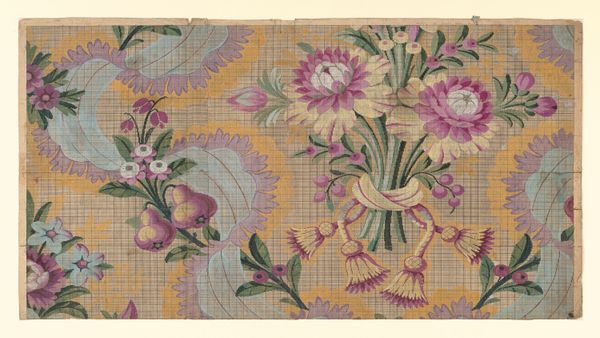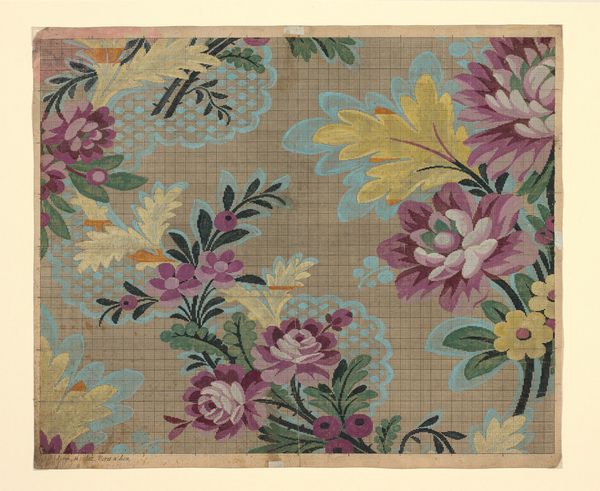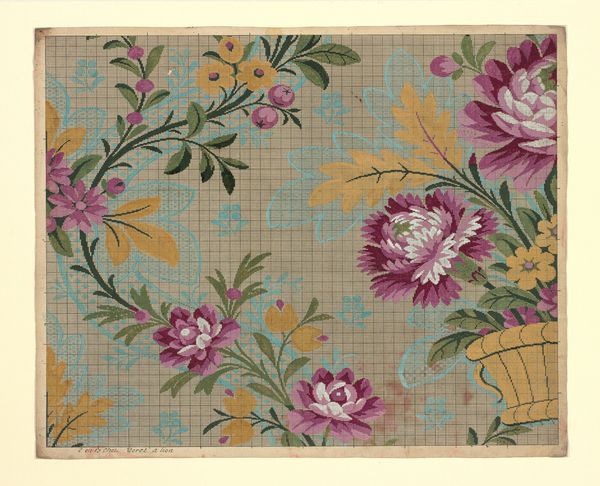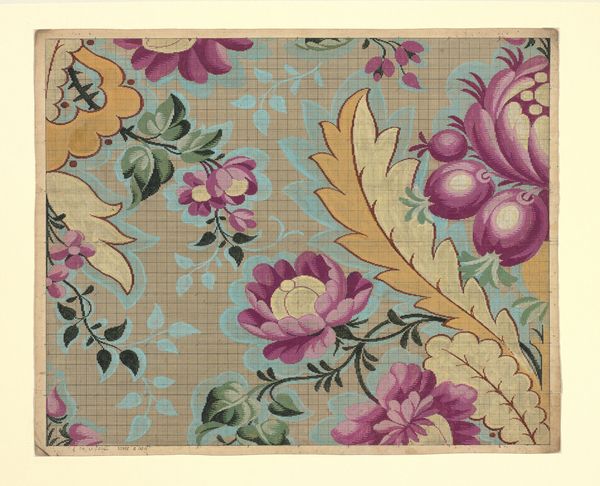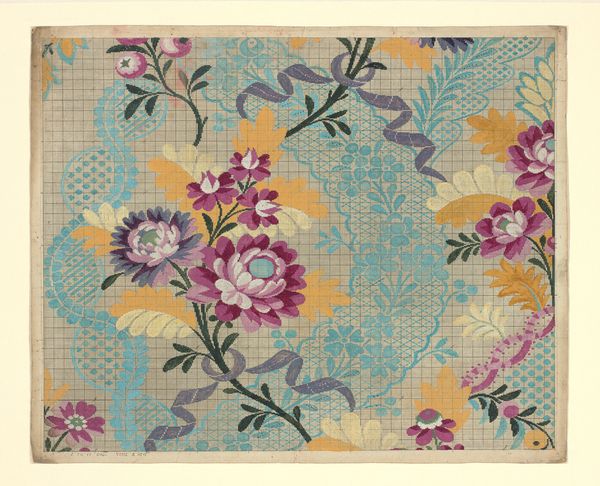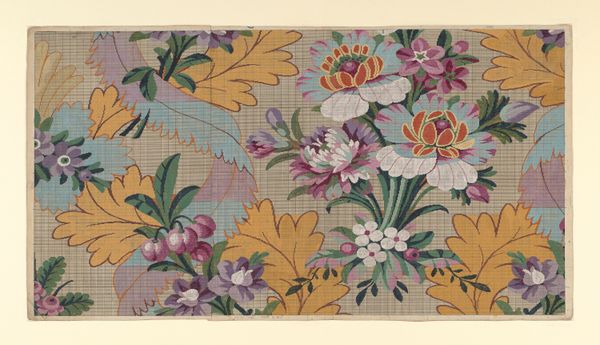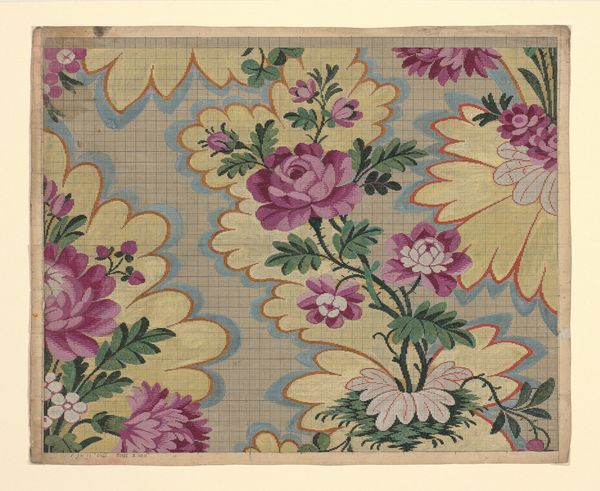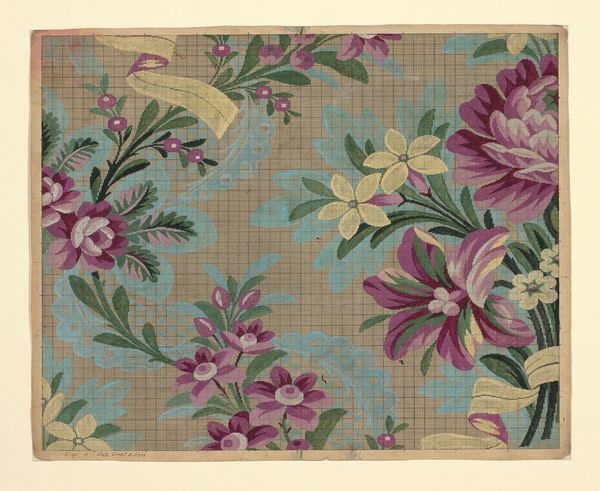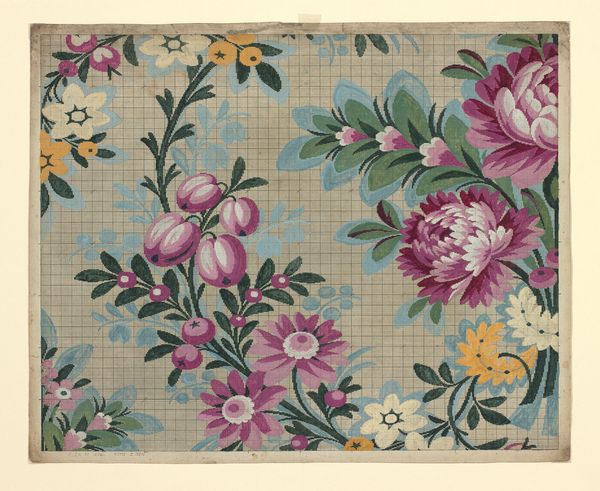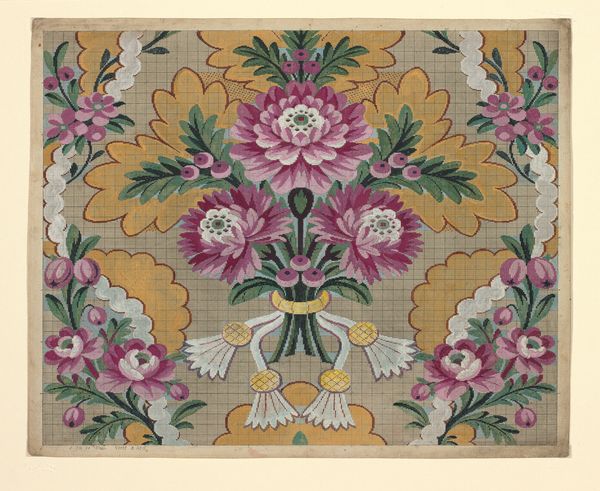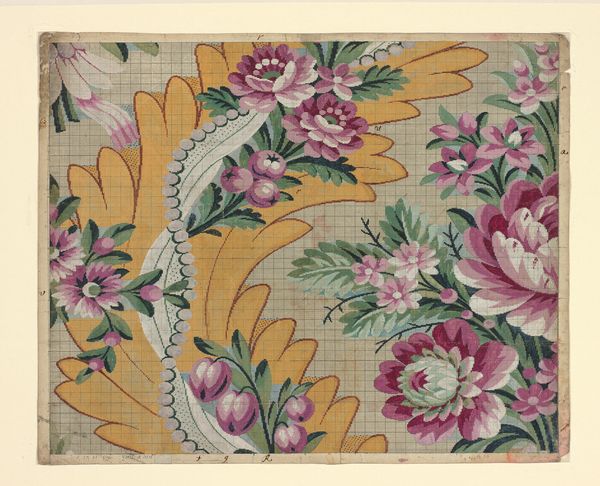
Dimensions: 39.4 × 55.6 cm (15 1/2 × 21 7/8 in.)
Copyright: Public Domain
Editor: This textile design from the late 18th century by Germain Frères, called "Mise-en-carte (Point-paper)," uses mixed media including drawing on paper to showcase an intricate floral pattern. The delicate lines and soft colors give it an elegant, almost dreamlike quality. What stands out to you when you look at it? Curator: I see a vibrant cultural memory woven into this design. Look at the recurring floral motifs. What do flowers typically symbolize across different cultures? Consider their use in celebrations, mourning, even expressions of love and power. Editor: I guess flowers can represent so many things... beauty, fragility, life cycles… Curator: Precisely! Now consider the Rococo style, with its emphasis on ornate detail and asymmetrical designs. Doesn't this suggest a society that valued elegance and elaborate displays? Editor: Definitely. I hadn't considered how much the style itself could be a reflection of cultural values. Curator: And notice the grid underneath the floral pattern. It is more than just a backdrop. In the textile industry, what do you think a grid signifies? Editor: A guide? A template for the weavers to follow? Curator: Exactly! It's the underlying structure that brings the envisioned design to life, literally guiding the craftspeople in their work. This piece embodies both artistic vision and practical application, linking concept and creation in tangible ways. I find the intersection deeply compelling. Editor: That's fascinating. It shows how even seemingly simple decorative arts can hold layers of meaning when we examine their historical and cultural context. I'll definitely look at textile designs with new eyes. Curator: As will I, with the insights you brought to my attention today.
Comments
No comments
Be the first to comment and join the conversation on the ultimate creative platform.
